immigration
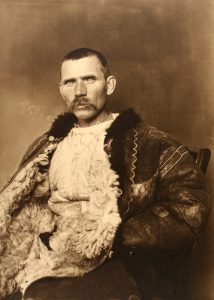
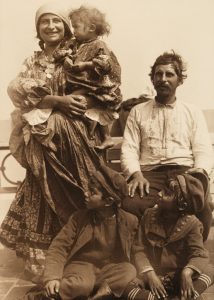
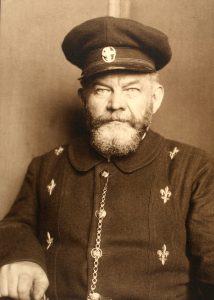 The United States has long been known as “The Melting Pot,” in reference to the immigration of many of its citizens. The United States was not a country that began with all of its people in place. I suppose no nation was really. There is, however, a legal way to immigrate, and an illegal way to sneak into a country. For the purpose of this story, the melting pot refers only to legal immigration. Beginning in 1892, and continuing until 1924, Ellis Island, located in New York Harbor, was the entrance for immigrants entering the United States. Not everyone who entered the United States had to go through Ellis Island, however. First and Second Class passengers were not so required. They were allowed to do all of their immigration paperwork, and inspections onboard the ship that arrived on. The Third Class passengers, however, were required to go through Ellis Island. There, they had medical exams and legal inspections to determine if they were fit for entry into the United States.
The United States has long been known as “The Melting Pot,” in reference to the immigration of many of its citizens. The United States was not a country that began with all of its people in place. I suppose no nation was really. There is, however, a legal way to immigrate, and an illegal way to sneak into a country. For the purpose of this story, the melting pot refers only to legal immigration. Beginning in 1892, and continuing until 1924, Ellis Island, located in New York Harbor, was the entrance for immigrants entering the United States. Not everyone who entered the United States had to go through Ellis Island, however. First and Second Class passengers were not so required. They were allowed to do all of their immigration paperwork, and inspections onboard the ship that arrived on. The Third Class passengers, however, were required to go through Ellis Island. There, they had medical exams and legal inspections to determine if they were fit for entry into the United States.
It is estimated that 12 million immigrants came through Ellis Island in those years. In all, about 2% were denied entrance into the United States. Our nation was quite generous with its legal immigration requests. One 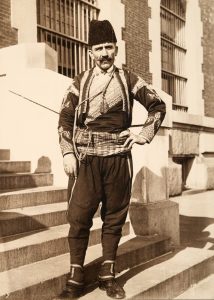
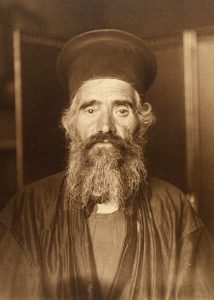 of the main reasons for the opening of Ellis Island was the change in the immigration requests. “Fewer arrivals were coming from northern and western Europe—Germany, Ireland, Britain and the Scandinavian countries—as more and more immigrants poured in from southern and eastern Europe. Among this new generation were Jews escaping from political and economic oppression in czarist Russia and eastern Europe (some 484,000 arrived in 1910 alone) and Italians escaping poverty in their country. There were also Poles, Hungarians, Czechs, Serbs, Slovaks and Greeks, along with non-Europeans from Syria, Turkey and Armenia. The reasons they left their homes in the Old World included war, drought, famine and religious persecution, and all had hopes for greater opportunity in the New World.”
of the main reasons for the opening of Ellis Island was the change in the immigration requests. “Fewer arrivals were coming from northern and western Europe—Germany, Ireland, Britain and the Scandinavian countries—as more and more immigrants poured in from southern and eastern Europe. Among this new generation were Jews escaping from political and economic oppression in czarist Russia and eastern Europe (some 484,000 arrived in 1910 alone) and Italians escaping poverty in their country. There were also Poles, Hungarians, Czechs, Serbs, Slovaks and Greeks, along with non-Europeans from Syria, Turkey and Armenia. The reasons they left their homes in the Old World included war, drought, famine and religious persecution, and all had hopes for greater opportunity in the New World.”
At one point, one of the men working on Ellis Island decided to bring his camera, and document the variety of people coming through. His photos really do show the “melting pot” that the United States was. He photographed a Romanian shepherd, a Serbian gypsy family, Danish captain, a bearded Greek priest, a Turkish bank guard, an Albanian soldier, an Algerian (wearing his finest clothes), and a tattooed German stowaway (who was eventually deported). It gives an inside look at the varied people who came to the United States, 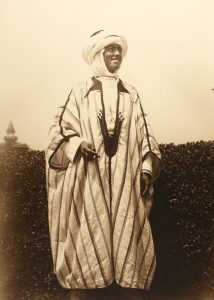
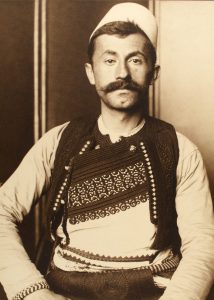
 and these were just the third class passengers, seen on Ellis Island.
and these were just the third class passengers, seen on Ellis Island.
Ellis Island was used as an immigration center until 1924, at which time it was used until 1954 as a detention and deportation center for illegal immigrants. Now it is a museum, and a place where people can go to see if their ancestors came through on their way to a better life. The island had a varied past, and played a major role in creating “The Melting Pot” the United States was.
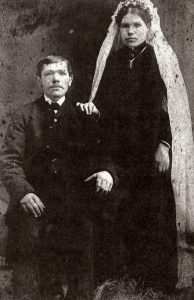 My great grandparents, Henriette and Carl Schumacher were both of German descent. They both came to America at different times…Grandma in 1882 and Grandpa in 1884. They met at a baptism and fell in love. They were married, and had 7 children, one of whom died as a little girl. They were just two of the many German people who have come to this country as far back as the colonial days. Of course, there were many German people who came here before my great grandparents. One of the most notable groups was the 13 German Mennonite families from Krefeld who landed in Philadelphia. These families founded Germantown, Pennsylvania on October 6, 1683. The settlement was the first German establishment in the original thirteen American colonies.
My great grandparents, Henriette and Carl Schumacher were both of German descent. They both came to America at different times…Grandma in 1882 and Grandpa in 1884. They met at a baptism and fell in love. They were married, and had 7 children, one of whom died as a little girl. They were just two of the many German people who have come to this country as far back as the colonial days. Of course, there were many German people who came here before my great grandparents. One of the most notable groups was the 13 German Mennonite families from Krefeld who landed in Philadelphia. These families founded Germantown, Pennsylvania on October 6, 1683. The settlement was the first German establishment in the original thirteen American colonies.
There are many people in the United States who can trace their ancestry back to German roots in one way or another, and the German-American people have been a building block in this nation. These were people who wanted to come here for a better  life, or to escape some of the horrors of the German government, and I for one am thankful that my grandparents immigrated to this country. President Ronald Reagan believed that the German-American heritage was so important to this nation, that in 1983, he proclaimed October 6 as German-American Day to celebrate and honor the 300th anniversary of German American immigration and culture to the United States. On August 6, 1987, Congress approved S.J. Resolution 108, designating October 6, 1987, as German-American Day. It became Public Law 100-104 when President Reagan signed it on August 18, 1987. Proclamation number 5719 was issued on October 2, 1987, by President Reagan in a formal ceremony in the White House Rose Garden, at which time the President called on Americans to observe the Day with appropriate ceremonies and activities. Now for many people, that might include German beer, as well as Oktoberfest activities…basically a party.
life, or to escape some of the horrors of the German government, and I for one am thankful that my grandparents immigrated to this country. President Ronald Reagan believed that the German-American heritage was so important to this nation, that in 1983, he proclaimed October 6 as German-American Day to celebrate and honor the 300th anniversary of German American immigration and culture to the United States. On August 6, 1987, Congress approved S.J. Resolution 108, designating October 6, 1987, as German-American Day. It became Public Law 100-104 when President Reagan signed it on August 18, 1987. Proclamation number 5719 was issued on October 2, 1987, by President Reagan in a formal ceremony in the White House Rose Garden, at which time the President called on Americans to observe the Day with appropriate ceremonies and activities. Now for many people, that might include German beer, as well as Oktoberfest activities…basically a party.
 The Germantown, Pennsylvania, settlers organized the first petition in the English colonies to abolish slavery in 1688. Originally known as German Day, the holiday was celebrated for the first time in Philadelphia in 1883, on the occasion of the 200th anniversary of the arrival of the settlers from Krefeld. Similar celebrations developed later in other parts of the country, but the custom died out during World War I as a result of the anti-German sentiment that prevailed at the time. Then, in 1983, President Reagan decided that the time had come to reinstate it. I think it’s a good thing, because those German people who left Germany, were not like the German government was. They were truly good people, who were good for this nation.
The Germantown, Pennsylvania, settlers organized the first petition in the English colonies to abolish slavery in 1688. Originally known as German Day, the holiday was celebrated for the first time in Philadelphia in 1883, on the occasion of the 200th anniversary of the arrival of the settlers from Krefeld. Similar celebrations developed later in other parts of the country, but the custom died out during World War I as a result of the anti-German sentiment that prevailed at the time. Then, in 1983, President Reagan decided that the time had come to reinstate it. I think it’s a good thing, because those German people who left Germany, were not like the German government was. They were truly good people, who were good for this nation.
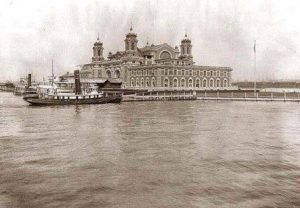 A number of my ancestors came to America during and prior to the years that Ellis Island was the processing center in New York. I have no doubt that some of them came through Ellis Island, but I have not confirmed that. I find many of the names in my tree, but while many of the ancestors I have found came over by way of New York, it would appear that my direct line arrived in America before the immigration center at Ellis Island opened on January 2, 1892. Before that time, immigrants were handled by the individual states where the immigrant first arrived. It is estimated that about 40% of Americans can trace their roots through Ellis Island, so while I see many familiar names, they may or may not be my direct line, and in fact, they might not be related at all.
A number of my ancestors came to America during and prior to the years that Ellis Island was the processing center in New York. I have no doubt that some of them came through Ellis Island, but I have not confirmed that. I find many of the names in my tree, but while many of the ancestors I have found came over by way of New York, it would appear that my direct line arrived in America before the immigration center at Ellis Island opened on January 2, 1892. Before that time, immigrants were handled by the individual states where the immigrant first arrived. It is estimated that about 40% of Americans can trace their roots through Ellis Island, so while I see many familiar names, they may or may not be my direct line, and in fact, they might not be related at all.
Ellis Island is located in New York Harbor off the New Jersey coast and was named for merchant Samuel Ellis, who owned the land in the 1770s. The island was given the nickname, The Gateway to America because more than 12 million immigrants passed through the center since it opened in 1892. On January 2, 1892, 15 year old Annie Moore, from Ireland, became the first person to pass through the newly opened Ellis Island, which President Benjamin Harrison designated as America’s first federal immigration center in 1890. Oddly, not all 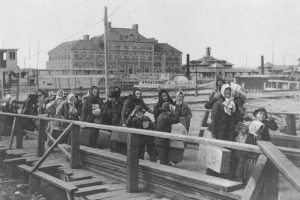 immigrants who sailed into New York had to go through Ellis Island. First and second class passengers were just given a brief shipboard inspection and then disembarked at the piers in New York or New Jersey, where they passed through customs. People in third class, though, were transported to Ellis Island, where they underwent medical and legal inspections to ensure they didn’t have a contagious disease or some condition that would make them a burden to the government. Nevertheless, only two percent of all immigrants were denied entrance into the United States. The peak years of immigration through Ellis Island were from 1892 to 1924. The 3.3 acre island was enlarged by landfill, and by the 1930s, it had reached its current size of 27.5 acres. After the extra size was completed, new buildings were constructed to handle the massive influx of people coming to America for a better life. During it’s busiest year, which was 1907, over 1 million people were processed through Ellis Island.
immigrants who sailed into New York had to go through Ellis Island. First and second class passengers were just given a brief shipboard inspection and then disembarked at the piers in New York or New Jersey, where they passed through customs. People in third class, though, were transported to Ellis Island, where they underwent medical and legal inspections to ensure they didn’t have a contagious disease or some condition that would make them a burden to the government. Nevertheless, only two percent of all immigrants were denied entrance into the United States. The peak years of immigration through Ellis Island were from 1892 to 1924. The 3.3 acre island was enlarged by landfill, and by the 1930s, it had reached its current size of 27.5 acres. After the extra size was completed, new buildings were constructed to handle the massive influx of people coming to America for a better life. During it’s busiest year, which was 1907, over 1 million people were processed through Ellis Island.
When the United States entered into World War I, immigration to the United States decline, most likely because travel anywhere was risky. Ellis Island was used as a detention center for suspected enemies during that time. Following the war, Congress passed quota laws and the Immigration Act of 1924, which sharply reduced the number of newcomers allowed into the country and also enabled immigrants to be processed at United States  consulates abroad. The act also enabled immigrants to be processed at United States consulates abroad, making detention at Ellis Island obsolete. After 1924, Ellis Island switched from a processing center to other purposes, such as a detention and deportation center for illegal immigrants, a hospital for wounded soldiers during World War II and a Coast Guard training center. In November 1954, the last detainee, a Norwegian merchant seaman, was released and Ellis Island officially closed on November 12, 1954. In 1984, Ellis Island underwent a $160 million renovation, the largest historic restoration project in United States history. In September 1990, the Ellis Island Immigration Museum opened to the public and is visited by almost 2 million people each year.
consulates abroad. The act also enabled immigrants to be processed at United States consulates abroad, making detention at Ellis Island obsolete. After 1924, Ellis Island switched from a processing center to other purposes, such as a detention and deportation center for illegal immigrants, a hospital for wounded soldiers during World War II and a Coast Guard training center. In November 1954, the last detainee, a Norwegian merchant seaman, was released and Ellis Island officially closed on November 12, 1954. In 1984, Ellis Island underwent a $160 million renovation, the largest historic restoration project in United States history. In September 1990, the Ellis Island Immigration Museum opened to the public and is visited by almost 2 million people each year.
 Lately, I have been looking in Ancestry.com, at immigration records for many of my ancestors. As I looked at the different ships they sailed on and the different locations they came from, I began to wonder about what it was really like to immigrate back them. I decided to do some research on that subject, and I was amazed at some of what I found.
Lately, I have been looking in Ancestry.com, at immigration records for many of my ancestors. As I looked at the different ships they sailed on and the different locations they came from, I began to wonder about what it was really like to immigrate back them. I decided to do some research on that subject, and I was amazed at some of what I found.
Of course, the biggest obstacle they faced was the cost…especially for a family. What doesn’t sound like much to us today, was really a lot of money back in the 1800s, and before. My great grandfather, Carl Schuhmacher spent seven years saving the $50.00 that it cost for one person to go. Many times, the whole family would work to send one person over so they could see if the opportunities were really there, and then that person would work t pay for the rest of the family to come.
For people who had to travel in steerage class, the journey was going to be a rough one. There was no limit to the number of steerage tickets sold, and the cost was usually $30.00 per ticket, which tells me that maybe my great grandfather had not traveled in steerage class…which is a relief to me after what I have read. Since there was no limit to the steerage tickets sold, the people were packed into the steerage area like cattle. The cost to feed each one was about sixty cents a day, so they could potentially make a net profit of $45,000 to $60,000 for each crossing. This was money made at the expense of the health, welfare, and even lives of those steerage passengers…a fact that I find shocking to say the least!!
Even when the immigrant wasn’t in steerage, the rough weather often made everyone sick. I don’t think that ships back then had some of the stabilizing features ships have today, and since they were smaller, they were probably tossed around more. Not good if you get sea sick…or even if you normally don’t.
Immigrants were told to be at the docks a day ahead of the departure date, because they had to be examined by American doctors before they were allowed to board the ship. I have no idea where they waited if they didn’t get examined the day before they sailed. I also have to wonder if they had to be examined again when they arrived here, because so many of them were sick on the ship that I would still think they brought disease to America.
Arrival in America didn’t necessarily mean they were set either. Because of language differences and strange sounding names, they were often subject to verbal abuse and discrimination. To fit in they would need to learn 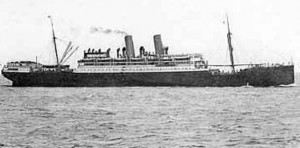 English…something I do agree with, although I don’t agree with discrimination or verbal abuse…or any other kind of abuse. I think they needed someone to teach them, without belittling them. Most wanted to fit in, but didn’t know how to learn English, or simply didn’t have a way to learn it.
English…something I do agree with, although I don’t agree with discrimination or verbal abuse…or any other kind of abuse. I think they needed someone to teach them, without belittling them. Most wanted to fit in, but didn’t know how to learn English, or simply didn’t have a way to learn it.
Any time you make a decision to move to another country, it is a life changing decision, but in those days, it was a much bigger change than it is these days. Had it not been for necessity, due to famine and poverty in their ow country, I have to wonder just how many people would have taken the risk.
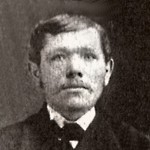 On this, the 130th anniversary of the arrival of my great grandfather, Carl Ludwig Theodor Schumacher in the United States, I have been thinking about how it must have felt for him. He had made the most difficult decision to leave his homeland at the very young age of 25, and board the SS Gellert, leaving from Hamburg, Germany on April 6, 1884 to start a new life, far away from his parents and family in the United States of America. He had been reading letters from his uncle and cousins about how wonderful America was, and in particular, how wonderful Minnesota was, since he was 18, and he had made up his mind to go. He would work seven long years taking care of the horses of a wealthy landowner to earn the $50.00 needed to pay his fare. He knew that travel by ship across the Atlantic could be dangerous, and he might be very homesick for his family, but he was determined to go. He knew, also that it would take years of hard work to build the American Dream that he had in mind for his life. My great grandfather would be successful in building his American Dream, but today my thoughts go not to thinking of his dreams, but rather to how he must have felt as he made such a life change.
On this, the 130th anniversary of the arrival of my great grandfather, Carl Ludwig Theodor Schumacher in the United States, I have been thinking about how it must have felt for him. He had made the most difficult decision to leave his homeland at the very young age of 25, and board the SS Gellert, leaving from Hamburg, Germany on April 6, 1884 to start a new life, far away from his parents and family in the United States of America. He had been reading letters from his uncle and cousins about how wonderful America was, and in particular, how wonderful Minnesota was, since he was 18, and he had made up his mind to go. He would work seven long years taking care of the horses of a wealthy landowner to earn the $50.00 needed to pay his fare. He knew that travel by ship across the Atlantic could be dangerous, and he might be very homesick for his family, but he was determined to go. He knew, also that it would take years of hard work to build the American Dream that he had in mind for his life. My great grandfather would be successful in building his American Dream, but today my thoughts go not to thinking of his dreams, but rather to how he must have felt as he made such a life change.
A young man of 25 years is really not so grown up that a move half a world away doesn’t feel scary. That kind of a move would be a daunting experience for anyone, no matter how  old they are. And then to arrive at a place like Ellis Island, or in my grandfather’s case, Castle Garden, since the Ellis Island facility wasn’t built until 1892…not really knowing what you would be put through before you would be allowed to enter the United States. Many people were required to Americanize their names, so it would be easier for them to fit in…forever altering their identity. That was the case for my great grandfather, when his name was changed from Schuhmacher to Schumacher. Still, the immigrants felt like this was a small sacrifice to make for the gain of the American Dream, and in fact, many immigrants felt like that name change was like a rite of passage into this great country.
old they are. And then to arrive at a place like Ellis Island, or in my grandfather’s case, Castle Garden, since the Ellis Island facility wasn’t built until 1892…not really knowing what you would be put through before you would be allowed to enter the United States. Many people were required to Americanize their names, so it would be easier for them to fit in…forever altering their identity. That was the case for my great grandfather, when his name was changed from Schuhmacher to Schumacher. Still, the immigrants felt like this was a small sacrifice to make for the gain of the American Dream, and in fact, many immigrants felt like that name change was like a rite of passage into this great country.
Nevertheless, I can’t help but feel that my grandfather must have felt some level of sadness at the change of his name, even though he would use it again when he was married. Still, the census records, and other records show it as Schumacher, thus muddying the waters when it comes to genealogy records. I don’t suppose that was the 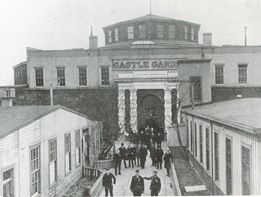 thing my great grandfather was thinking about as he waited for his turn at Castle Garden on April 21, 1884, but as my mind looks back in time to that day that would end up being so very important to my life, it is something that definitely occurs to me. My great grandfather had been through so much to come to this new land filled with opportunity, and I’m quite certain that the overwhelming changes must have made him quite weary, but as he arrived in Minnesota and began the work of building that dream, I suppose that all of the uncertainty of the journey to get where he was, became simply a distant memory. He was home…the home of his dreams.
thing my great grandfather was thinking about as he waited for his turn at Castle Garden on April 21, 1884, but as my mind looks back in time to that day that would end up being so very important to my life, it is something that definitely occurs to me. My great grandfather had been through so much to come to this new land filled with opportunity, and I’m quite certain that the overwhelming changes must have made him quite weary, but as he arrived in Minnesota and began the work of building that dream, I suppose that all of the uncertainty of the journey to get where he was, became simply a distant memory. He was home…the home of his dreams.

